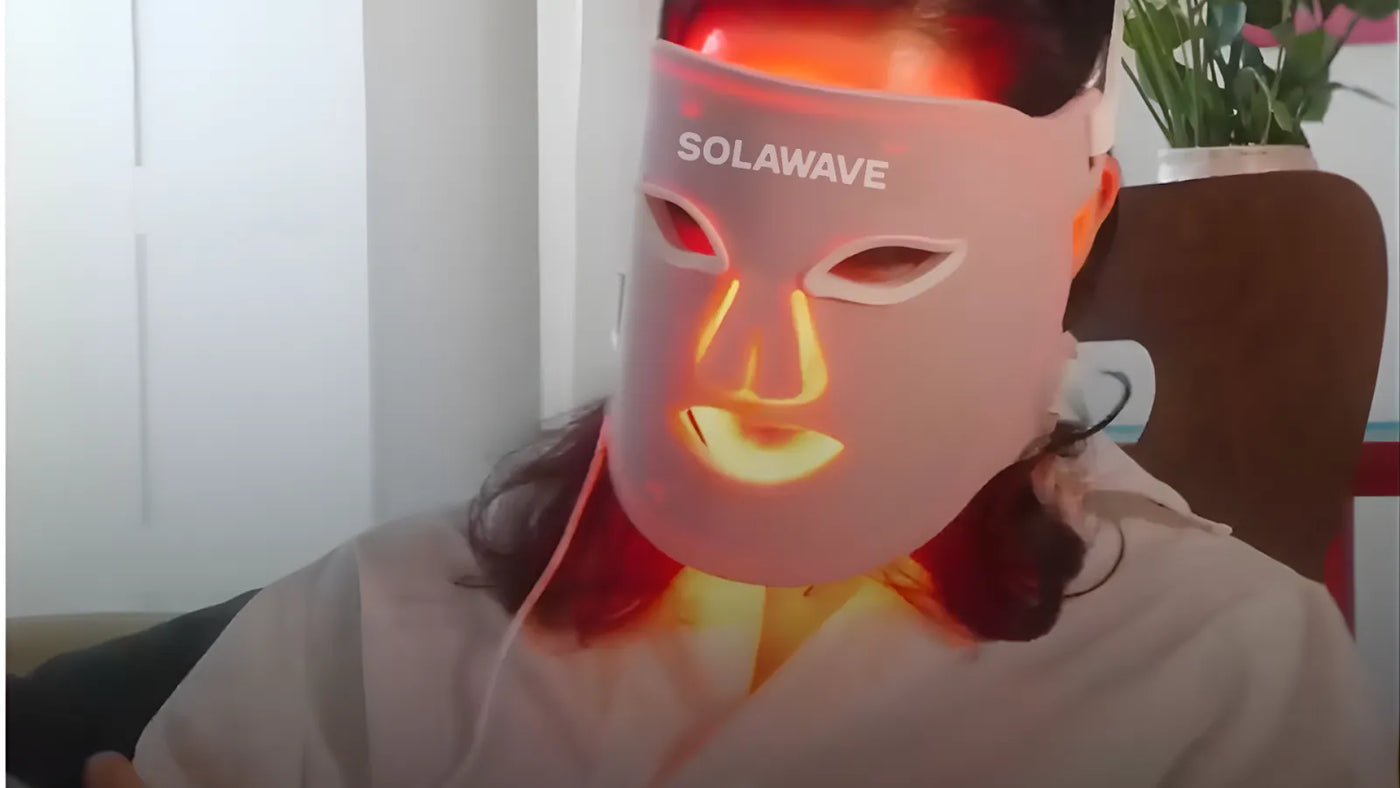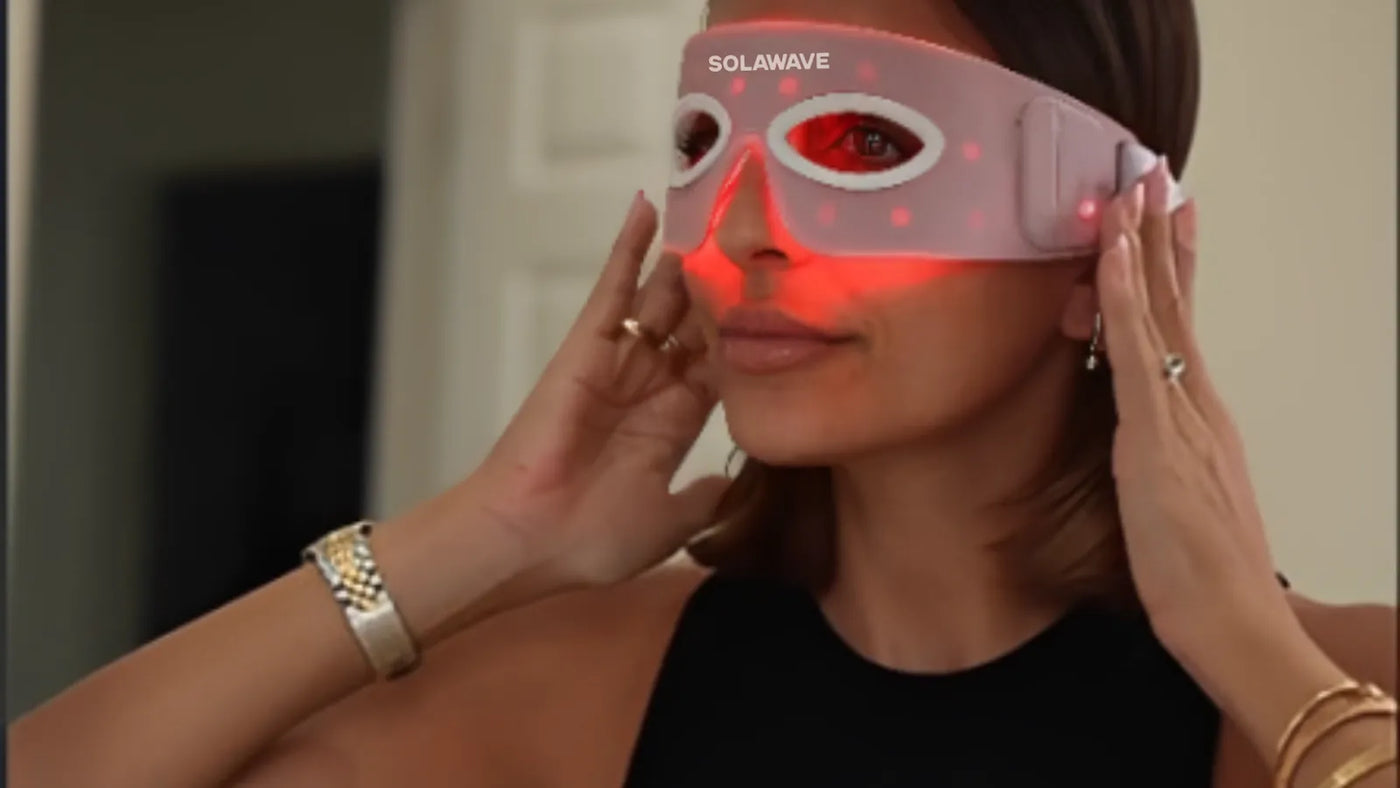

Red Light Therapy for Cellulite: Does It Work?
Cellulite is a common skin concern that affects people of all shapes, sizes, and backgrounds. Characterized by a dimpled or lumpy appearance, especially on the thighs, hips, and buttocks, cellulite is estimated to impact up to 90% of women and a smaller percentage of men at some point in their lives. Despite its prevalence, cellulite is completely normal and is not a sign of any underlying health issue.
In recent years, red light therapy has gained a lot of attention especially in the skincare realm, with claims ranging from improved skin tone to visibly smoothing fine lines and wrinkles. Many people are curious about whether this non-invasive approach can help reduce the appearance of cellulite, too, since it's so beneficial for other skin concerns. Plus, devices for red light therapy are now widely available for both professional and at-home use, making it more accessible than ever.
It’s important to understand, however, that red light therapy is not a cure or treatment for any medical or skin condition, including cellulite. While some individuals may notice changes in their skin’s appearance, current research does not support red light therapy as a proven solution for cellulite. Let's talk more about cellulite, red light therapy, and what actually may be able to help.
What Is Cellulite?
Cellulite refers to the dimpled, uneven texture that often appears on the skin, most commonly on the thighs, hips, buttocks, and abdomen. This distinctive look is sometimes described as having a cottage cheese or orange peel-like appearance. While it can vary in severity, cellulite is a purely cosmetic concern and does not indicate any health problem.
Cellulite is extremely common, especially among women. Studies estimate that up to 90% of women will experience cellulite at some point in their lives, compared to a much smaller percentage of men. The visibility of cellulite can differ based on factors like age, genetics, and skin thickness, but it’s important to know that it affects people of all body types and is a normal part of human skin.
What Causes Cellulite?
Cellulite develops when fat deposits push up against the connective tissue beneath your skin, creating a dimpled or lumpy appearance. The structure of this connective tissue, known as fibrous septae, plays a major role in how cellulite forms. In women, these connective tissues are arranged in a way that makes the skin more prone to dimpling, while men typically have a different pattern that is less likely to show cellulite.
Genetics also have a large influence on whether or not you develop cellulite. If your family members have cellulite, you are more likely to experience it as well. Hormones, especially estrogen, can affect the distribution of fat and the strength of connective tissue, making women more susceptible to cellulite than men.
Several factors can also worsen the appearance of cellulite, including age, as skin naturally becomes thinner and loses elasticity over time. Lifestyle choices such as a lack of physical activity, poor diet, dehydration, and smoking can also contribute to more noticeable cellulite. However, even people who are physically fit and maintain a healthy lifestyle can develop cellulite.
It's worth emphasizing again that cellulite is not a sign of poor health. It is a normal and extremely common skin condition that affects people of all shapes and sizes. Having cellulite does not mean there is anything wrong with your body or your overall well-being.
How Is Cellulite Typically Treated?
When it comes to addressing cellulite, there is no one-size-fits-all solution. While many products and treatments claim to reduce or eliminate cellulite, only a handful have research-backed evidence supporting their effectiveness. That said, make sure to approach any treatment with realistic expectations and understand that results can vary from person to person.
Topical Creams
Many over-the-counter creams are marketed for cellulite reduction, with ingredients like retinol and caffeine being the most common. Retinol-based creams may help thicken the skin over time, which can make cellulite less noticeable. Caffeine-based creams work by temporarily dehydrating fat cells, which can smooth the skin’s appearance for a short period. However, research shows that these effects are modest and temporary. Consistent, long-term use is required to see any visible improvement, and results often fade once you stop using the product.
Professional Treatments
Several professional treatments have been developed to target cellulite more directly. Some of the most researched options include:
-
Laser Therapy: Certain laser treatments, such as Cellulaze, use laser energy to break up the tough bands under the skin that cause dimpling. Clinical studies suggest that laser therapy can improve the appearance of cellulite for up to a year or more, but results are not permanent and multiple sessions may be needed.
-
Radiofrequency: This treatment uses heat to stimulate collagen production and tighten the skin. Research indicates that radiofrequency can lead to a moderate reduction in cellulite, especially when combined with other therapies.
-
Acoustic Wave Therapy: This technique uses sound waves to break up cellulite and improve skin texture. Some studies have shown promising results, but the effects are generally mild and require ongoing maintenance treatments.
While these professional treatments can offer noticeable improvements, they tend to be costly and require repeated sessions to maintain results. It’s also important to consult with a qualified provider to discuss potential risks and realistic outcomes.
Massage and Lymphatic Drainage
Massage techniques, including manual massage and specialized devices, can temporarily reduce the appearance of cellulite by improving circulation and encouraging lymphatic drainage. Endermologie, a mechanical massage treatment, has been shown in some studies to provide short-term improvement in skin texture. However, the effects are usually temporary and require ongoing sessions to maintain.
What Does the Research Say?
Scientific studies on cellulite treatments consistently show that while some methods can improve the appearance of cellulite, there is no true permanent or guaranteed solution. Most treatments offer only temporary or modest results, and individual responses can vary widely. The best approach is often a combination of professional treatments, topical products, and healthy lifestyle habits.
Ultimately, it’s important to remember that cellulite is a normal part of the human body. While you may choose to pursue treatments to reduce its appearance, embracing a healthy lifestyle and realistic expectations will help you feel more confident in your skin. Always consult with a healthcare professional before starting any new treatment, and be wary of products or services that promise dramatic or permanent results.
Can Red Light Therapy Help with Cellulite? (Research Review)
Red light therapy has gained attention as a proven option for improving skin appearance, especially when it comes to fine lines and wrinkles, but its effectiveness for cellulite is still under investigation. Several small studies and clinical trials have explored whether or not red light therapy can reduce the appearance of cellulite, often combining it with other treatments such as massage or radiofrequency.
Some research suggests that red light therapy may temporarily improve skin texture and elasticity, which could make cellulite less noticeable. For example, a few clinical trials have reported modest reductions in the appearance of cellulite when red light therapy was used alongside other interventions. However, these studies often involved small sample sizes, short treatment durations, or lack rigorous controls, making it difficult to draw firm conclusions.
A key limitation in the current research is that most studies do not isolate red light therapy as the sole treatment. Instead, they combine it with other methods, making it unclear whether the improvements are due to red light therapy itself or the combination of treatments. Additionally, the improvements observed are typically modest and short-lived, requiring ongoing sessions to maintain any visible changes.
Experts and dermatologists generally agree that while red light therapy may offer some temporary benefits for skin appearance, it is not a cure or proven treatment for cellulite (or any other skin conditions). Leading medical organizations emphasize that more high-quality, long-term studies are needed to determine its true effectiveness. At this time, there is no scientific consensus supporting red light therapy as a reliable solution for cellulite.
What Can Red Light Therapy Do For Skin?
Red light therapy has been studied for a variety of skin benefits, and research supports several proven effects when it’s used consistently and correctly. Red light therapy devices use specific wavelengths of red and near-infrared light to reach deeper layers of the skin, supporting your body’s natural skin renewal processes.
Clinical studies and independent testing have shown that red light therapy can help:
-
Reduce the appearance of fine lines and wrinkles: By supporting healthy collagen and elastin production, red light therapy helps strengthen the skin’s structure, making it appear firmer, smoother, and more plump over time.
-
Improve skin texture and brightness: Many users report visibly brighter and more even-toned skin, as well as a reduction in roughness or uneven patches. It can also help with inflammation caused by acne and breakouts, reducing the look of redness and irritation.
-
Enhance overall skin health: By boosting cellular energy, red light therapy helps your skin renew and restore itself more efficiently for visible skin rejuvenation.
These red light therapy benefits are supported by clinical studies, including independent trials where participants saw visible improvements in skin texture, brightness, and reduction of fine lines after consistent use over several weeks.
It’s important to clarify, however, that while red light therapy can improve the overall quality and appearance of your skin, these benefits do not equate to cellulite reduction. The mechanisms that help with fine lines, skin texture, and healing are different from those involved in the formation of cellulite.
Conclusion
Cellulite is a common and normal skin feature that results from the way fat deposits interact with connective tissue beneath the skin, influenced by genetics, hormones, and lifestyle factors. While many seek ways to reduce its appearance, it’s important to understand that cellulite is not a sign of poor health.
Red light therapy has become popular for its potential skin benefits, such as improving texture and supporting collagen production, but current research does not support it as a proven solution for cellulite. Most studies show only modest, temporary improvements, often in combination with other treatments, making it difficult to determine its true effectiveness for cellulite specifically.
If you want to address cellulite, focus on evidence-based methods like toning exercise, professional treatments, and healthy lifestyle habits, and always consult with a qualified healthcare or skincare professional for personalized advice.
Disclaimer: This article is intended for informational purposes only, and should not be interpreted as medical advice or guidance. Always seek medical advice and care from a trusted healthcare professional.
Sources:





















